Formerly: Surari Bara Bazaar
Address: Mahabandoola Road
Year built: 19th century
Architect: Unknown
Today’s Theingyi Market began its existence as the “Surati Bara Bazaar” in the 19th century. The term “Surati” refers to Muslim immigrants from Gujarat who came to Rangoon and Burma in large numbers during the 19th century. (From 1872 to 1881 alone, the Indian migrant population in the city more than quadrupled to 66,000.) Indian cultures and traditions, from religion to music to food, permeate the streets of this downtown area.
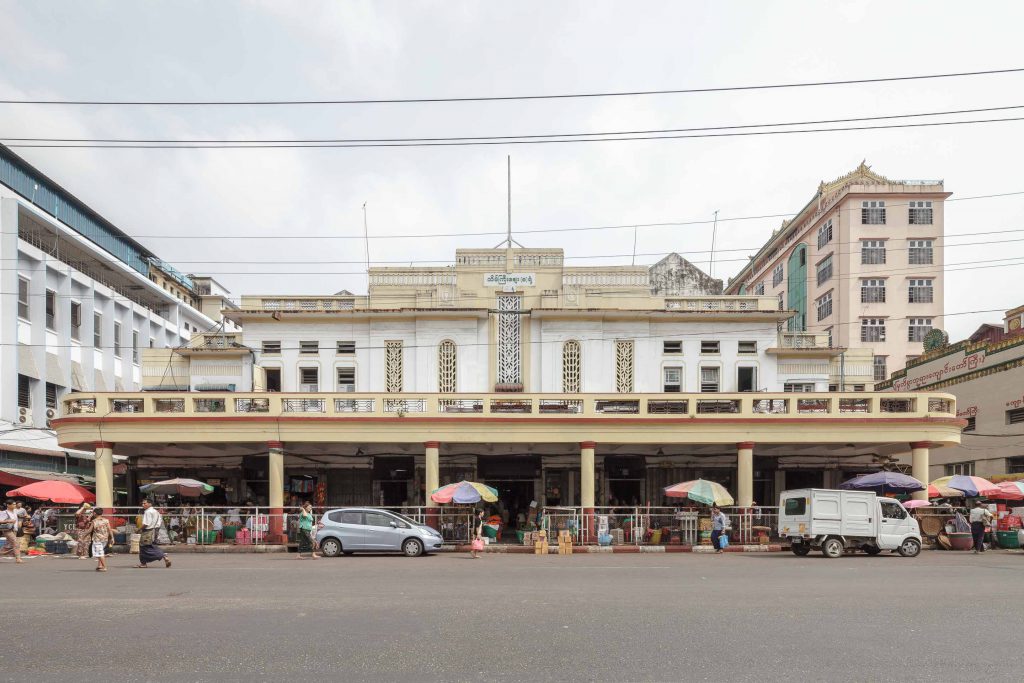
Theingyi attracts a broader, less affluent cross-section of Burmese shoppers and fewer tourists than nearby Bogyoke Aung San Market. The market started in the shade of a nearby monastery of the same name, which attracted many traders even before the British.
After the British began to expand Rangoon, the market area was handed over to Surati traders who built the bazaar. Between the 1850s and the 1900s the market grew, shrank, and was devastated early on by several fires. (Earlier structures were made of thatch.) Today the market consists of five blocks, lettered A through to E. They surround the intersection of Mahabandoola and Shwedagon Pagoda Roads. The “A” and “B” buildings date from 1938 and 1905 respectively. The façade of the B building, on Mahabandoola Road, stands out with its vast portico doubling up as a first-floor balcony, patterned perforated walls and louvred windows.
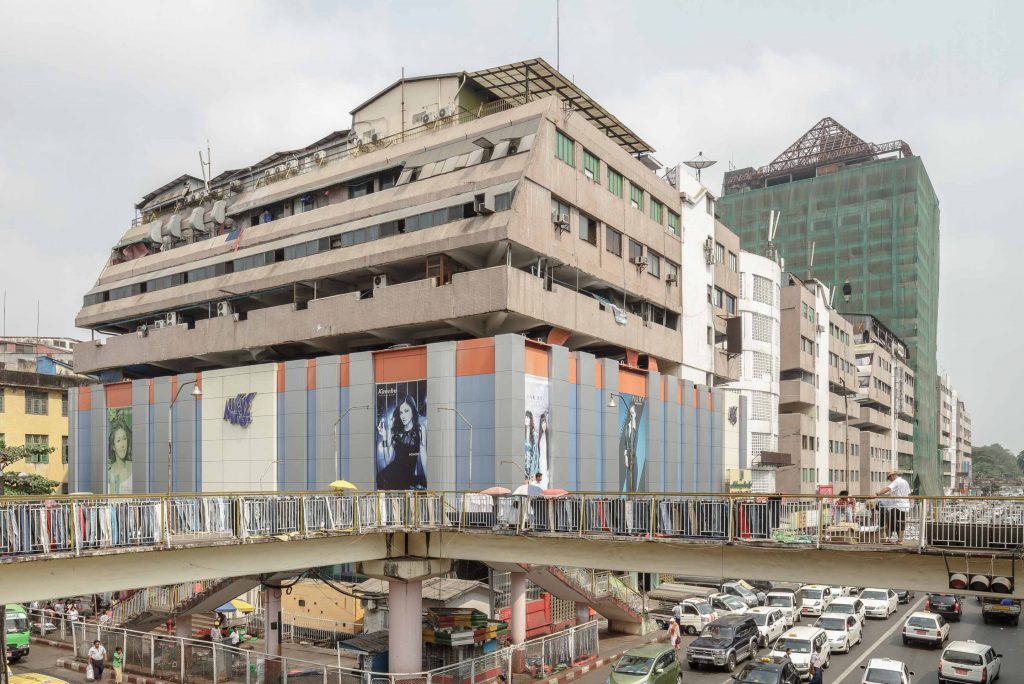
Some blocks were rebuilt post-1988 and are clearly identifiable as such. Block D, with its slanted façade, has a distinctly brutalist feel. Theingyi Market was the subject of a German university study on the concept of “living heritage”—in other words, a building that continues to fulfil its historical purpose. As the lead researcher, Professor Frauke Kraas explained: “You will find long-term relationships among the vendors and also beyond the market to other parts of Myanmar and even beyond. There are long historic roots [with] deep economic and social cohesion.” A visit to Theingyi Market is a definite must-see Yangon experience as grinding traffic, baskets of fresh fish and hollering merchants seem locked in a seamless choreography controlled by higher forces. The contrast with the sanitised alleys of Bogyoke Market tells more and more of—to use a cliché—a tale of two cities.
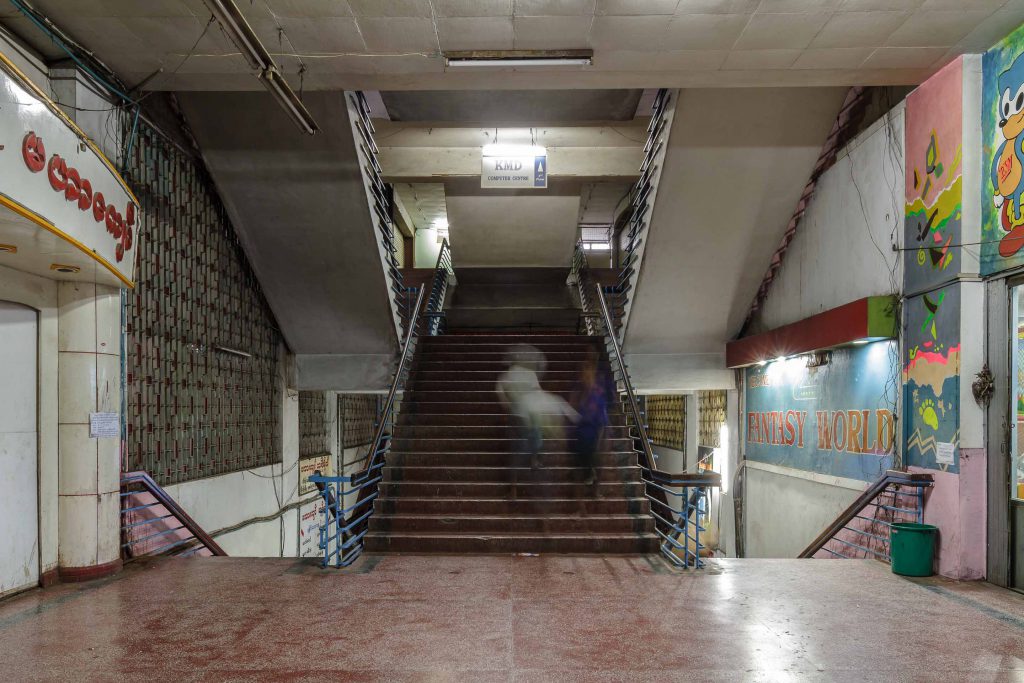
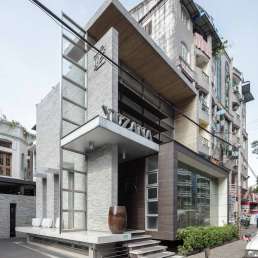
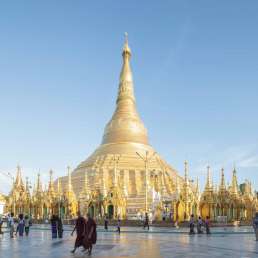
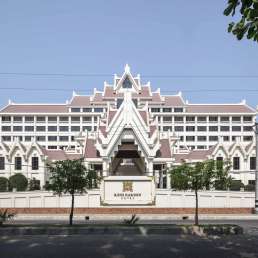
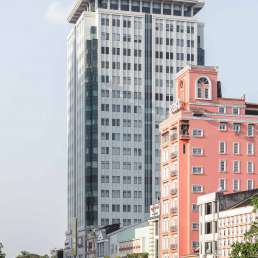
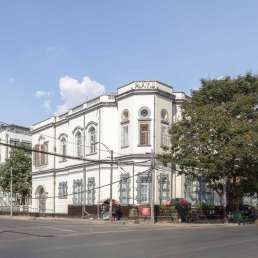
Very glad to know that.
It is a matter of joy that my grandfather had a cloth shop in this market in the late 1930 to 1945.
I would be grateful if any of you would be kind enough to give me further information via email.
Thank you for this information. I am looking for any descriptions of Rangoon City from 1938-Japanese Invasion. What it looked like, sounded like, the smells, environment? What it was really like to be there?
I had relatives there that have sadly passed away now and would be very, very grateful for any information/accounts.
Thanks in advance
Thank you for this information. I am looking for any descriptions of Rangoon City from 1938-Japanese Invasion. What it looked like, sounded like, the smells, environment? What it was really like to be there?
I had relatives there that have sadly passed away now and would be very, very grateful for any information/accounts.
Thanks in advance